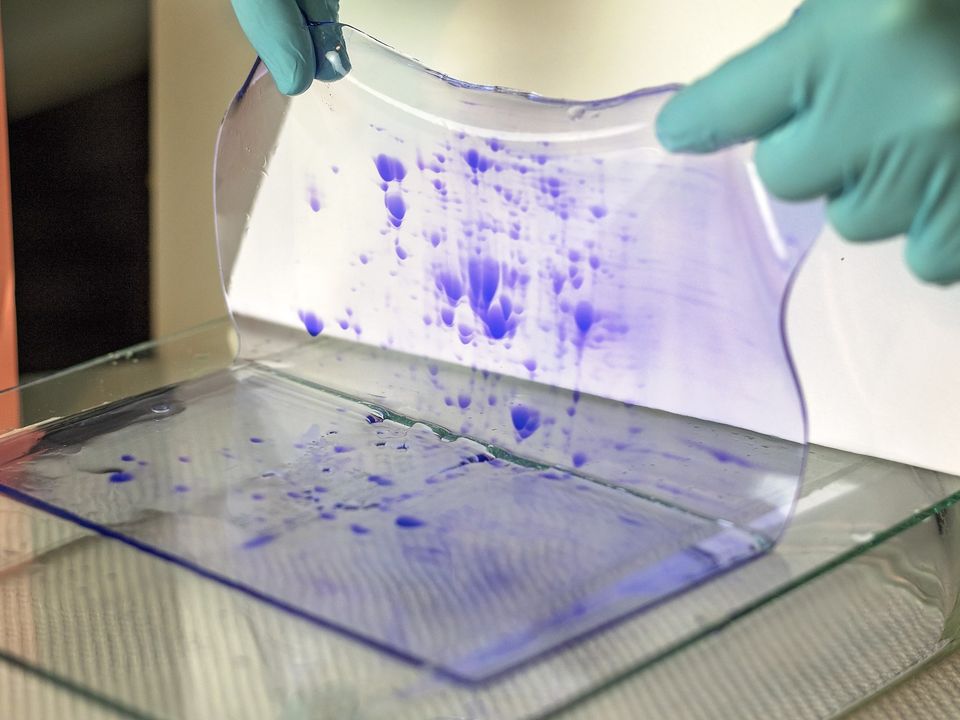Exploring Different Detection Methods for Phosphorylated Proteins in Western Blotting

Western blotting is a widely used and essential technique in molecular biology, allowing researchers to analyze and quantify specific proteins in complex biological samples. One of the crucial aspects of Western blotting is the ability to detect post-translational modifications (PTMs) like phosphorylation, which plays a pivotal role in signal transduction and cell regulation. Phosphorylation is the reversible addition of a phosphate group to a protein, and its dynamic nature makes it an important target for studying cellular processes. In this article, we will explore various detection methods for phosphorylated proteins in Western blotting, highlighting their advantages, limitations, and applications.
Importance of Detecting Phosphorylated Proteins:
Phosphorylation is a key mechanism for regulating protein activity, cellular signaling pathways, and cell fate decisions. It modulates protein conformation, protein-protein interactions, and enzymatic activity, leading to significant changes in cellular responses. Dysregulation of phosphorylation events is implicated in various diseases, including cancer, neurodegenerative disorders, and metabolic syndromes.
Detecting phosphorylated proteins in Western blotting can provide valuable insights into cellular signaling cascades, uncovering critical information about the underlying molecular events. This knowledge aids in understanding disease mechanisms, identifying potential therapeutic targets, and developing more effective treatments.
Common Detection Methods:
Traditional Antibody-Based Detection:
The most conventional approach for detecting phosphorylated proteins in Western blotting is through the use of phosphorylation-specific antibodies. These antibodies are designed to recognize and bind to specific phosphorylated amino acid residues on the target protein. The most common phosphorylated amino acids detected are serine, threonine, and tyrosine.
Advantages:
High specificity: Phospho-specific antibodies can selectively recognize the phosphorylated form of a protein, ensuring accurate results.
Versatility: Numerous commercially available antibodies target different phosphorylation sites, offering a wide range of detection options.
Compatibility: Phospho-specific antibodies can be used with standard Western blotting protocols, making them easily adaptable to most laboratories.
Limitations:
Cost: Phospho-specific antibodies can be expensive, particularly if multiple targets need to be studied.
Limited coverage: Some phosphorylation events may not have specific antibodies available, limiting their detection.
Cross-reactivity: Phospho-specific antibodies may exhibit cross-reactivity with other proteins containing similar phosphorylated residues, leading to false-positive results.
Total Protein Staining with Phospho-Protein Antibody:
In this method, researchers stain the Western blot membrane with a general protein stain, such as Ponceau S or Coomassie blue, to visualize the total protein content. Subsequently, the same membrane is probed with a phospho-specific antibody to detect phosphorylated proteins.
Advantages:
Simplicity: The process requires only one membrane, reducing experimental time and sample consumption.
Comparative analysis: By comparing total protein levels with phosphorylated protein levels, researchers can assess changes in phosphorylation relative to total protein expression.
Limitations:
Sensitivity: Total protein staining might not be sensitive enough to detect low abundance phosphorylated proteins.
Non-specific binding: Phospho-specific antibodies could bind non-specifically to other proteins, generating false-positive signals.
Phospho-Protein Staining with Antibody Stripping:
This technique involves probing the Western blot membrane with a phospho-specific antibody to detect phosphorylated proteins. After visualization and analysis, the membrane is stripped of antibodies and subsequently probed with another antibody to detect a non-phosphorylated protein or a loading control.
Advantages:
Specificity: By stripping and reprobing the membrane, researchers can confidently assess the specificity of the phosphorylation signal.
Efficient use of samples: Multiple targets can be studied on the same membrane, conserving precious experimental samples.
Limitations:
Time-consuming: The process of stripping and reprobing the membrane can be time-consuming and may increase the chances of protein degradation.
Decreased signal intensity: Repeated stripping and probing can lead to decreased signal intensity, potentially compromising the detection of low abundance phosphorylated proteins.
Phospho-Tag Antibodies:
Phospho-tag antibodies are unique in that they contain a phosphate-binding tag, which specifically binds to phosphorylated proteins. This method offers an alternative approach to traditional phospho-specific antibodies.
Advantages:
High specificity: Phospho-tag antibodies specifically target phosphorylated proteins, minimizing the risk of cross-reactivity.
Multiplexing capabilities: Phospho-tag antibodies can be used for simultaneous detection of multiple phosphorylated proteins on the same membrane.
Limitations:
Availability: Although increasingly accessible, phospho-tag antibodies might not be as widely available as traditional phospho-specific antibodies.
Optimization: Phospho-tag antibodies may require specific experimental conditions for optimal results.
Pro-Q Diamond Phosphoprotein Stain:
The Pro-Q Diamond phosphoprotein stain is a fluorescent dye that selectively binds to phosphorylated proteins. It is a sensitive and versatile method for the detection of phosphorylated proteins in Western blotting.
Advantages:
High sensitivity: Pro-Q Diamond stain can detect low abundance phosphorylated proteins with exceptional sensitivity.
Quantitative: The fluorescence intensity can be quantified, enabling the relative quantification of phosphorylated proteins.
Limitations:
Specialized equipment: The detection requires a fluorescence imaging system, which might not be readily available in all laboratories.
Compatibility: Pro-Q Diamond staining is not compatible with downstream immunoblotting, limiting the ability to correlate phosphorylation events with specific proteins.
Conclusion:
Phosphorylation is a crucial cellular event that regulates various biological processes, and its detection in Western blotting provides valuable insights into cell signaling pathways and disease mechanisms. Researchers can choose from a range of detection methods, each with its own advantages and limitations.
While traditional phospho-specific antibodies offer high specificity and versatility, newer methods like phospho-tag antibodies and Pro-Q Diamond stain provide exciting alternatives. These methods can aid researchers in understanding the intricate dynamics of phosphorylation events and contribute to the development of targeted therapies for various diseases.
As the field of Western blotting and phosphoprotein detection continues to evolve, researchers are encouraged to explore different methods to suit their specific experimental needs. By utilizing the most appropriate detection method, researchers can unravel the complexities of phosphorylated proteins and pave the way for groundbreaking discoveries in the field of molecular biology.
As you embark on your journey of exploring phosphorylated proteins in Western blotting, consider the specific needs of your research and choose the detection method that best aligns with your objectives. Whether you opt for traditional phospho-specific antibodies, the versatility of phospho-tag antibodies, or the sensitivity of Pro-Q Diamond staining, each method offers unique insights into cellular signaling pathways.
Stay curious, innovative, and persistent in your pursuit of scientific discovery. By constantly seeking new knowledge and refining experimental techniques, you contribute to the advancement of molecular biology and pave the way for transformative breakthroughs in human health and disease. Happy exploring!




